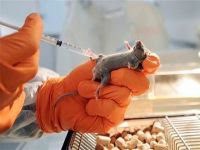Gene therapy used in mice protect from influenza virus
Gene therapy protected mice influenza virus pandemic...
A dose of adeno-associated virus, which acts as an activator of the antibody that neutralizes the influenza pandemic strains in the nostrils of mice and ferrets (rodents), protected them from the flu.
A study by specialists at the University of Pennsylvania, in the United States (U.S.) revealed on Wednesday that a genes-related therapy protected mice against different influenza viruses that have caused pandemics such as the Spanish flu, that in the early twentieth century killed about 50 million people.
The authors of this study published in the journal Science Translational Medicine explained that a dose of adeno-associated virus, which acts as an activator of the antibody that neutralizes the influenza pandemic strains in the nostrils of mice and ferrets, protected the rodents from influenza.
Adeno-associated viruses were used to transfer genes that occur naturally in humans and primates, and are not pathogenic.
The analysis showed that the mice were completely protected from H5N1 and H1N1, highly pathogenic and responsible for deadly flu.
These strains were isolated from samples associated with various historical pandemics, including the 1918 and 2009.
"The experiments described in this study demonstrate the effectiveness of this approach in animals, which could be used to fight any pandemic or bioterrorism agent, for which antibodies are available and can be easily isolated," said James Wilson, of the University of Pennsylvania, author of the study.
The expert added that "the development of this genetic technology has become even more urgent with the recent surge in China's H7N9 bird flu, deadly to humans".
Meanwhile, Maria Lambris, University of Pennsylvania, found that the novelty of this approach is the use of adeno-associated virus to achieve a simple and effective prophylactic vaccine in the nasal passages.
"The antibodies have been used against cancer and the treatment of autoimmune diseases, but not to fight against infectious diseases," he said.
He further expressed that "this new technique allows the development of a prophylactic vaccine against influenza, at less cost, easy to administer and whose manufacture is fast," said the scientist.
These researchers are working with the various stakeholders in the project to accelerate the development of this technology and explore the potential of adenovirus as a vector for a biological antidote against chemical weapons.
teleSUR - Afp - The Carabobo / jl - GP
Translated from the Spanish version by:
Lisa Karpova
Pravda.Ru

Subscribe to Pravda.Ru Telegram channel, Facebook, RSS!

